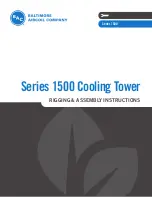
En-10
Flare nut [in. (mm)]
Tightening torque [lbf·ft (N·m)]
1/4 (6.35) dia.
11.8 to 13.3 (16 to 18)
3/8 (9.52) dia.
23.6 to 31.0 (32 to 42)
1/2 (12.70) dia.
36.1 to 45.0 (49 to 61)
5/8 (15.88) dia.
46.5 to 55.3 (63 to 75)
3/4 (19.05) dia.
66.4 to 81.1 (90 to 110)
6.4. Installing heat insulation
CAUTION
After checking for gas leaks (refer to the Installation
Manual of the outdoor unit), perform this section.
Install heat insulation around both the large (gas) and
small (liquid) pipes. Failure to do so may cause water
leaks.
Must
fi
t tightly against body without any gap.
After checking for gas leaks, insulate by wrapping insulation
around the 2 parts (gas and liquid) of the indoor unit coupling,
using the coupler heat insulation.
After installing the coupler heat insulation, wrap both ends
with vinyl tape so that there is no gap.
Body
Be sure to overlap the
insulation
Coupler heat insulation
No gap
No gap
Coupler heat
insulation
7. ELECTRICAL WIRING
WARNING
Electrical work must be performed in accordance with
this Manual by a person certi
fi
ed under the national or
regional regulations. Be sure to use a dedicated circuit
for the unit.
An insuf
fi
cient power supply circuit or improperly
performed electrical work can cause serious accidents
such as electric shock or
fi
re.
Before starting work, check that power is not being
supplied to the indoor unit and outdoor unit.
Use the included connection cables and power cables
or ones speci
fi
ed by the manufacturer. Improper
connections, insuf
fi
cient insulation, or exceeding the
allowable current can cause electric shock or
fi
re.
For wiring, use the prescribed type of wires, connect
them securely, making sure that there are no
external forces of the wires applied to the terminal
connections. Improperly connected or secured wires
can cause serious accidents such as overheating the
terminals, electric shock, or
fi
re.
Do not modify the power cables, use extension
cables, or use any branches in the wiring. Improper
connections, insuf
fi
cient insulation, or exceeding the
allowable current can cause electric shock or
fi
re.
Match the terminal block numbers and connection
cable colors with those of outdoor unit or branch box.
Erroneous wiring may cause burning of the electric
parts.
Securely connect the connection cables to the
terminal blocks. In addition, secure the cables with
wiring holders. Improper connections, either in
the wiring or at the ends of the wiring, can cause a
malfunction, electric shock, or
fi
re.
Connect the connection cables
fi
rmly to the terminal
board. Imperfect installation may cause a
fi
re.
Always fasten the outside covering of the connection
cable with the cable clamp. (If the insulator is chafed,
electric leakage may occur.)
Securely install the electrical box cover on the unit.
An improperly installed electrical box cover can
cause serious accidents such as electric shock or
fi
re
through exposure to dust or water.
Install sleeves into any holes made in the walls for
wiring. Otherwise, a short circuit could result.
Install an earth (ground) leakage breaker. In addition,
install the earth (ground) leakage breaker so that the
entire AC main power supply is cut off at the same
time. Otherwise, electric shock or
fi
re could result.
Always connect the earth (ground) wire.
Improper earthing (grounding) work can cause electric
shocks.
Install the remote controller cable and bus wire so as
not to be direct touched with your hand.
Perform wiring work in accordance with standards
so that the air conditioner can be operated safely and
positively.
If the supply cable is damaged, it must be replaced
by the manufacturer, its service agent or similarly
quali
fi
ed persons in order to avoid a hazard.
(1) Use ring terminals with insulating sleeves as shown in the
following
fi
gure to connect to the terminal block.
(2) Securely clamp the ring terminals to the wires using an
appropriate tool so that the wires do not come loose.
(3) Use the speci
fi
ed wires, connect them securely, and fasten
them so that there is no stress placed on the terminals.
(4) Use an appropriate screwdriver to tighten the terminal
screws. Do not use a screwdriver that is too small, other-
wise, the screw heads may be damaged and prevent the
screws from being properly tightened.
(5) Do not tighten the terminal screws too much, otherwise,
the screws may break.
(6) See table 1 for the terminal screw tightening torques.
9374318599-02_IM.indb 10
9374318599-02_IM.indb 10
9/26/2018 11:04:20 AM
9/26/2018 11:04:20 AM







































